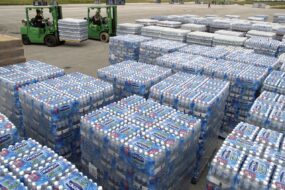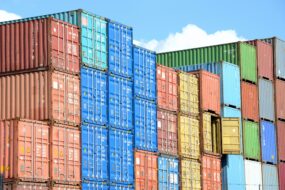Contents

You won’t be able to determine how profitable your business is without knowing each product’s landed cost. This is the total cost to get a product to your customers, including the cost of manufacturing or acquiring the product, shipping fees, customs costs, shipping insurance, and any other related expenses.
Without knowing landed cost, you won’t have an accurate idea of your actual profits. It’s absolutely necessary for a business to predict landed cost and then audit it when actual data is available. You can then make changes to certain aspects of the fulfillment process to make sure you are actually making a profit (and a big enough one) rather than taking a loss.
What Is Landed Cost?
Landed cost is the total cost of the product from the factory floor to the customer’s hands. Every aspect of producing, acquiring, packaging, and shipping the product is included in landing cost. It gives you a very clear idea of your company’s profitability. Without landed cost, you simply can’t calculate your profits accurately.
What Factors Are Included?
Landed costs include a variety of expenses, and the exact factors that are included will vary from business to business. These are the factors most frequently included in landed cost:
Prices of Goods
Whether you manufacture your own products or acquire them from suppliers, there are costs involved. The total price of a product is the base number for your landed cost.
Packaging & Shipping Costs
Packaging and shipping costs are the primary components of landed cost next to the price of goods. First, you need to assess packaging costs — what it costs to crate, sort, and pack your goods. Then, shipping needs to be considered.
Your average shipping cost will vary depending on the size and weight of your products, shipping zones, and delivery timelines. Take an inventory of your shipping costs to determine where you can cut expenses, such as by choosing a different shipping carrier or opting for slower shipping times.
Shipping Insurance
Not every business features shipping insurance on their packages. If you sell high-value items, it may be worth it to offer it. Since it’s an added cost, it will factor into your landed cost.
Handling Fees
In addition to shipping expenses, handling fees may sometimes apply, particularly if you are dealing with oversized items.
Customs & Import Taxes
If you ship goods internationally, you’re going to encounter a higher landed cost than if you only ship domestically. Customs charges can significantly increase the total amount it costs to get your product to your customers’ doorsteps.
Each country will have a different agency that tracks and collects duties, tariffs, broker fees, harbor fees, and value-added tax (VAT) for imported goods. You’ll determine whether you or the buyers pay these fees. If the end consumer pays these fees, your landed cost will be reduced. If you are shouldering the burden, expect a higher landed cost.
You can reduce some of these costs if you work with international fulfillment centers, which ship the items domestically. Depending on the nature of your products, this might work for you. But in most cases, it’s impossible to fully avoid these fees.
Exchange Rates
When you do business internationally, you are subject to currency exchange rates. Sometimes, these work to your benefit. Other times, they don’t.
Overhead Costs
It costs money to manage this entire process. Labor expenses and other miscellaneous fees often factor into the final landed cost.
Why Does Landed Cost Matter?
If you don’t have a handle on your profitability, you can’t effectively grow. The first step is to determine your landed cost.
Without the true landed cost of each product, you can’t know which products make you the most money. This is valuable information in terms of your inventory management.
If you are taking a loss on a product, it might be time to cut it from your inventory. Likewise, you might want to expand product lines in areas where you have the greatest profitability margin. You need products’ landing costs to intelligently make these decisions.
Landing cost can also help you to improve efficiency. If a factor of your landed cost is disproportionate, it might be time to revisit it.
For example, if packaging and shipping fees are eating up an unreasonable amount, you can assess areas for improvement. You may need to consider leaner packaging that costs less or choose a different shipping carrier that can save you money. If you don’t see the financial impact of these areas, you can’t effectively find better solutions.
Overall, landed cost allows you to evaluate your business’s success. When all the costs are factored in, you’ll have a clear view of the profit or loss on each product you carry.
How to Calculate Landed Cost
Each product’s landed cost may be calculated slightly differently depending on what is involved in its fulfillment. You can calculate landed cost on a per-unit basis or on a per-order basis, depending on what the average order looks like for your business.
Here is a basic formula for landed cost:
Product cost + packaging and shipping costs + shipping insurance + handling fees + customs fees + other costs = landed cost
If your profit margin isn’t enough when you factor in landed cost, you may need to raise the retail price on the product.
How to Reduce Landed Cost
To reduce landed cost, you need to analyze every cost that factors into it. Look for opportunities to save in any area. Those savings will reduce your landed cost and increase your profit margin.
When landed cost is part of your profitability calculation, you can improve efficiencies and make changes needed to boost your overall profit margin.




